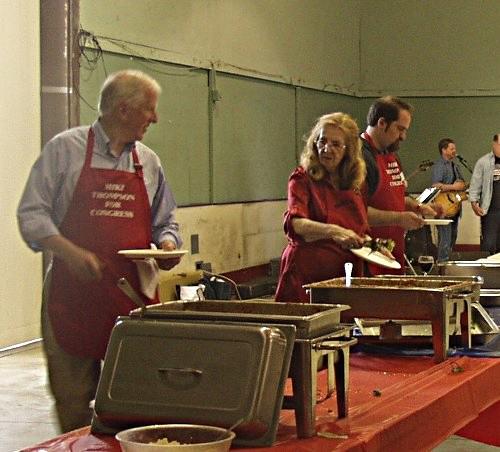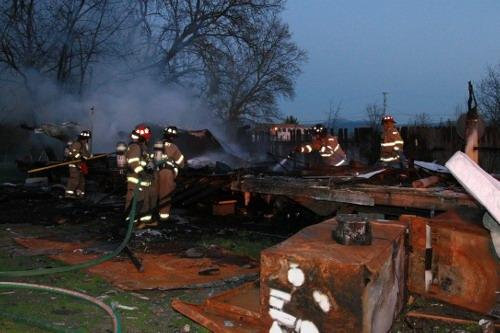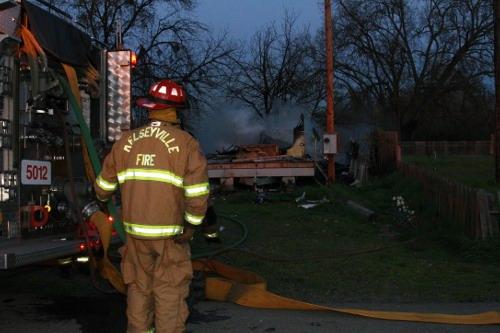So you want to eat healthier but you want to remain a carnivore. You feel vegetables are for prey animals to eat or to decorate the side of your plate, not for you. Potatoes are the closest thing you get to eating a plant. Fine, I understand, I’m not here to judge. And I have a recommendation.
Take a look at buffalo meat. The bison, as they are truly called, are actually not related to buffalo.
Buffalo are native to Asia (the water buffalo) and Africa (the cape buffalo), and while bison are members of the bovine family they aren’t closely related to the Asian and African varieties.
There are many stories about how bison got the name “buffalo” but in my research I haven’t found a truly believable one. A popular Internet story tells of French explorers calling bison “les beoufs,” meaning oxen, but this doesn’t seem believable to me since Europe has a bison-like animal called a wisent. French immigrants would have been reminded of the wisent much more than of an ox, and it wouldn’t make sense that they would give it the name of something it doesn’t look like.
The French have a word for bison and it is ... drum roll please ... bison (pronounced bee-SOH). The Latin word for bison is bison, the Greek word for bison is bison, so the appearance of the word buffalo makes no sense since obviously Europeans knew the bison.
The wisent looks similar to the bison but isn’t as big and has a smaller head than the North American bison. There’s a fat, big-headed American joke in that last statement for all of you continentals reading this.
I asked my sister, who is getting her master’s degree in French studies, to see what she could find out. She confirmed that a lot of sources attribute the word “buffalo” to the French, which she said is “weird, because the French use the word 'bison,' so why should they be given credit for a name that they don't use?” She said that the only theory that makes sense is that they used the French words for “water cow” which are “boeuf à l'eau” – pronounced “buf-a-low.” My little sister, she’s so smart.
Everybody knows that you can’t roller skate in a buffalo herd, and I won’t go into the long, damning story most of us learned it in grade school of how they were almost wiped out, but in 1889 there were less than 1,000 head of bison left in the country.
But in 1905 The American Bison Society (ABS) was founded by pioneering conservationists and sportsmen including William T. Hornaday (the director of the Bronx Zoo) and President Theodore Roosevelt to help save the bison from extinction and raise public awareness about the species.
Through their efforts of creating wild bison reserves and stocking them with bison from the Wildlife Conservation Society’s Bronx Zoo, current populations of the bison are closer to 600,000. More than 90 percent of these bison are being raised for meat in managed circumstances.
Male bison grow to be 1,500 to 2,000 pounds and females reach about 1,000. That makes bison the largest land animal native to North America.
There are three distinct types of bison: the American, the Canadian and the previously mentioned wisent. Bison would migrate from Canada across the Niagara and that is how Buffalo, N.Y. got its name. Shouldn’t we rename it Bison, N.Y.? One last quick fact: the plural for bison is still just bison.
Now I know that we’ve all been warned of the detriments of eating red meat, but there are people that just like it. Bison is a red meat, and it is far and away healthier than beef.
To give you a comparison per 100 grams of meat: Lower in fat, calories and cholesterol, yet higher in protein and iron. Let’s face it, bison is not only health food but also diet food for carnivores.
A visit to a local bison ranch
Lake County residents have the advantage of having two bison farms locally. Many people are familiar with the ranch on Highway 20 on the way out to Ukiah, and we also have one on Bottle Rock Road not far from Kelseyville.
Rob Brown was kind enough to give me a tour of his ranch “Buffalo Hills,” and we went out and looked at his herd of bison. I had never met him previous to this meeting so I felt privileged to be able to take up so much of his time.
Rob told me he has no problems with cougars or bears bothering his herd since the bison are so much larger than any predator in the area. Bison aren’t native to Lake County, but in their native areas such as Montana bison are preyed upon by packs of wolves and grizzly bears. If we ever experience a problem with either of them I think the least of our worries will be the bison losses; besides, bison are very good at protecting themselves.
I kept mentioning to Brown how shocked I was that the ranch doesn’t seem to have a lot of massive beast damage (not an actual technical term, but it gets my point across). The fence around the ranch is merely some low wire fencing with barbed wire at the top. How does such a flimsy thing keep the bison caged? Also, there aren’t any trees missing their bark or uprooted from rutting or rubbing. I mean, bison aren’t considered to be a domesticated creature, these are wild animals, so my comments kept returning to my surprise at how nice the ranch land was.
Brown revealed that the bison themselves are good stewards of the land. If you have ever visited a cattle or sheep ranch you would notice that the animals stomp across the countryside and eat the area bare. Bison, on the other hand, seem to tiptoe across the landscape. On occasion one will get loose and wander over to the neighbor’s, but otherwise they aren’t very bothersome.
In addition to wild grazing, his bison eat an organic feed specifically formulated for bison with alfalfa, corn, wheat, rice and even almond hulls. He’s been raising bison for 12 years now and is looking to increase his steak in the herd (sorry, I know it should be “stake”; “steak” was a cheap shot but I had to do it). There are ponds on the property for the bison to drink from, and in addition Cole Creek runs through the ranch providing plenty of water. There are 300 acres to the family’s ranch and Brown is clearing more of the brush so he can increase the herd. Instead of burning all of this dead brush Brown is leaving it in piles to act as habitat for quail and other smaller critters.
Technically bison meat is kosher, but Lake County bison aren’t slaughtered in a kosher facility as of yet. Bison meat is also permitted by the Qur’an, but Lake County bison meat isn’t slaughtered in a halal fashion (for the curious, the person slaughtering an animal must do so in the name of Allah in order for it to be acceptable to Muslims; otherwise, from what I understand Lake County bison are handled in the method prescribed by Islam). For the vegetarians ... sorry, I can’t help you here, I wasn’t able to find any vegetarian version of bison at all.
A unique taste
It really bothers me when people say that something “tastes like chicken” or “tastes like beef.” To me, that is the last refuge of the lazy palate. You might as well say that all red wines taste alike and all white wines taste alike.
But I have to admit that when it came to describing the flavor of bison I ran into some problems. Bison is similar to beef in texture and taste, I’ll give you that much, but it’s not just like it. Because it is so much leaner than beef it has a different flavor. I purchased a bunch of bison meat and cooked up several cuts for my wife and asked her, “Describe its taste.”
We both hemmed and hawed for a while and surprised ourselves with our lack of perspicacity on the issue. We can taste wine and pick out subtle flavors all day long, but bison was giving us a problem. We said things like, “It’s beefy with a hint of duck or lamb.” But no, that’s not right. “It has a beef-like texture but an earthier flavor.” No, still not what I was looking for; I mean, what is “earthy” anyway? But the best we could do to describe bison is, “It tastes bisony.”
As I showed before, bison is very lean and a great way for people to drop beef from their diet but still eat a hearty red meat. Because it is so lean it is very unforgiving, and the one thing you have to watch for is over-cooking it. Fat makes meat forgiving.
To get around this issue, you should always brine bison meat before cooking. Not only does it add salt into the meat but the water that hitchhikes in with the salt adds a layer of protection from over-cooking. To brine meat, use a ratio of four cups water to 1 tablespoon salt. Marinade the meat in this for a couple hours; if you wish to marinade it overnight, use a ratio of four cups water and one teaspoon salt.
Don’t try to add herbs or spices to the brine. I don’t want to go into a long molecular explanation about how the electrically charged ions in salt and the electrical charge in the herbs are different, and the salt water can’t effectively carry the herbs into the cellular structure of the meat ... see what I mean? It’s all so complicated. Just stick to plain brine.
Some mythology with your dinner
As always I love to add a little mythology to any subject I’m discussing, but this time it very well could be fact. Turn down the lights and insert creepy music here ...
A long time ago there was a bird called Argentavis. It was 6 feet tall when standing on its feet and had a wingspan over 20 feet wide. It looked like a Goliath version of an eagle or vulture. Scientists have its skeleton; we know for a fact that at one time it existed.
Speculation goes that it lived in Argentina, but that in the springtime, when the thunderstorms roll across the Midwest of the United States, the young bison have been born, and the warm upwelling springtime air gave perfect flight conditions for the Argentavis to fly north it would appear in our skies.
They came north to feed on the thousands of young bison. The Plains tribespeople of the time knew that when the thunderstorms came in the spring they brought with them the giant bird that they named “Thunderbird.” Children were warned not to wander from the tribe at this time of year.
While most scientists and ornithologists say Argentavis is long extinct, there are some cryptozoologists that think Argentavis isn’t extinct, though very close. They believe Argentavis still haunt the skies, and every few years there is an alleged sighting of one of these giants in the U.S. Just in the past couple of years there have been alleged sightings in Pennsylvania, Alaska and Texas. Argentavis has become the bird version of Bigfoot, but it is doubtful if the bison population returns to its previous levels that the Argentavis would also return.
In my efforts to cook more healthy foods for my family we are currently in talks to switch completely away from beef to bison (though the petting zoo vegetarian in the family is holding onto her dissenting vote). Have I piqued your interest? Want to try some bison meat? You can call Buffalo Hills Bison Ranch at 707-279-2063.
Just a final note; I fully intended to include J bar S Bison Ranch located out on Highway 20 in the column, but after leaving numerous messages I never heard back from them. I always try to feature everyone relevant on a subject, but this time I wasn’t able to.
A recipe for bison
Now for the recipe of the day.
In the time since I purchased my bison meat I’ve made bison steaks, bison tacos (no need to drain the fat after browning the meat), chankonabe (a stew for sumo wrestlers), hamburgers (bisonburgers?) and I’m looking forward to experimenting with much more.
One of my favorites so far was the bison roast with my Cabernet cream sauce. I went with a Cabernet because it rolls off the tongue better than “Merlot Cream Sauce.” The Cabernet cream sauce is nice and simple and doesn’t overpower the bison, but you could jazz it up and make it your own by finishing it with a little bit of shaved chocolate, sautéed mushrooms, fresh thyme or garlic powder. My wife likes the sauce as is and would like it “in an I.V. pumping into my arm ... but then I couldn’t taste it. Maybe in one of those beer hats with the straw that just hangs down in your mouth.”
And yes, I do catch the humor of taking a healthful, low-calorie meat like bison and covering it in heavy cream, but you have to have some fun once in a while. I won’t tell you how to cook your roast, everyone has their own way of doing that, but here’s the sauce to serve it with. It would also go well with bison steaks if you choose.
Cabernet cream sauce
You’ll need the pan the bison roast cooked in with the all the leftover bits still attached (the French call this “fond”).
¾ cup Cabernet Sauvignon
1 cup heavy or whipping cream
1/3 cup shallot, shredded (onions will work fine)
2 tablespoons flour
2 tablespoons butter
Salt and black pepper to taste
While the roast cooks, sauté the shallots in one tablespoon of the butter (reserve the other one tablespoon for later) in a medium-sized saucepan until translucent. Leaving the shallots in the pan, add the other tablespoon of butter. Stir in all of the flour and cook for one minute on medium heat, stirring constantly until fully combined. Remove this shallot roux from the pan and set aside. Turn off the heat and leave pan for later use.
When the roast is finished cooking, remove from the oven and immediately remove it from the pan and set it on a plate to rest. Pour the Cabernet Sauvignon into the pan and stir to deglaze (remove all of the bits stuck to the bottom of the pan).
When the bottom of the pan is clean of all of the fond, pour the wine into the saucepan that the shallots and butter were cooked in, and cook on high heat for one to two minutes until the alcohol is cooked out of the wine (when it doesn’t taste “winey” it’s ready). Then add the shallot roux to the wine and whisk constantly, until the mixture is combined and thickens to look like chocolate pudding. At that point add the cream and continue to whisk until completely combined. Turn off the heat and return to the roast.
Pour any juices that have escaped from the roast as it rested into the sauce and whisk in. Add plenty of black pepper to taste and then finish with salt. Add any personal additions at this time. Pour over the slices of roast bison and serve.
Ross A. Christensen is an award-winning gardener and gourmet cook. He is the author of "Sushi A to Z, The Ultimate Guide" and is currently working on a new book. He has been a public speaker for many years and enjoys being involved in the community.
{mos_sb_discuss:2}













